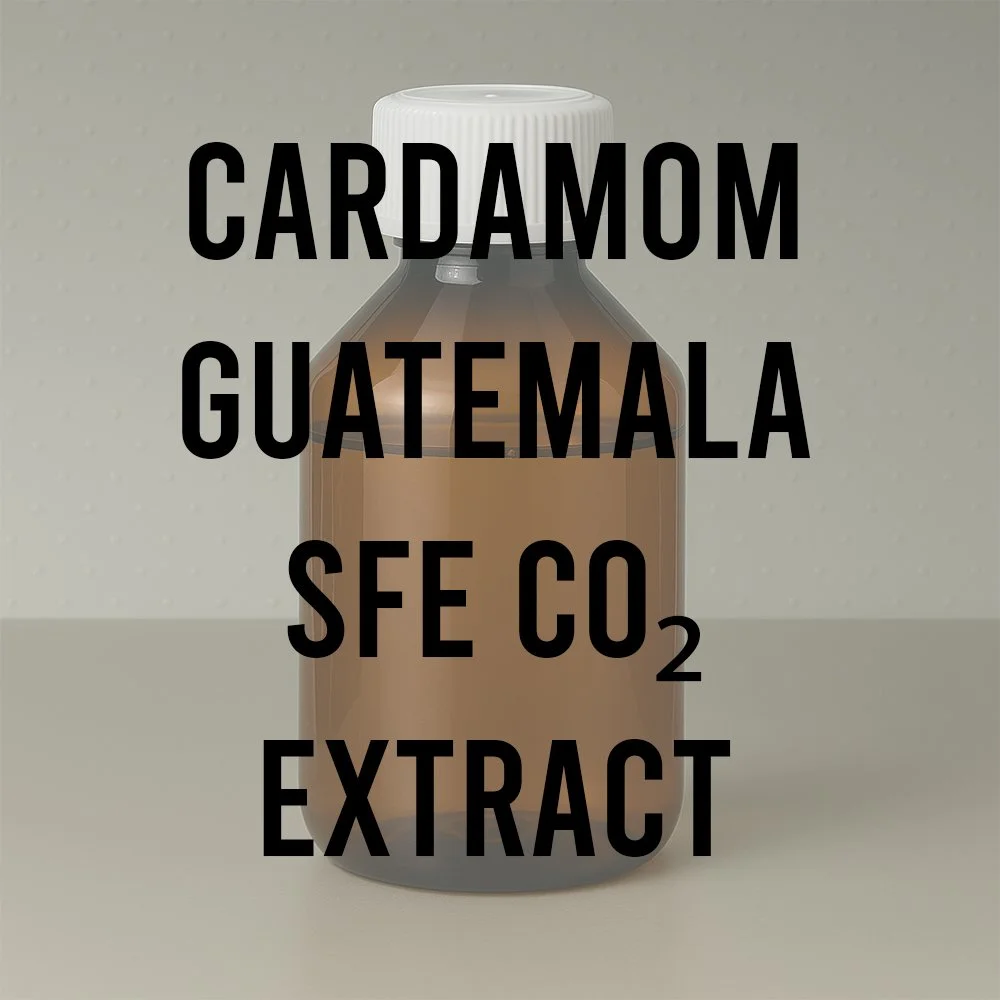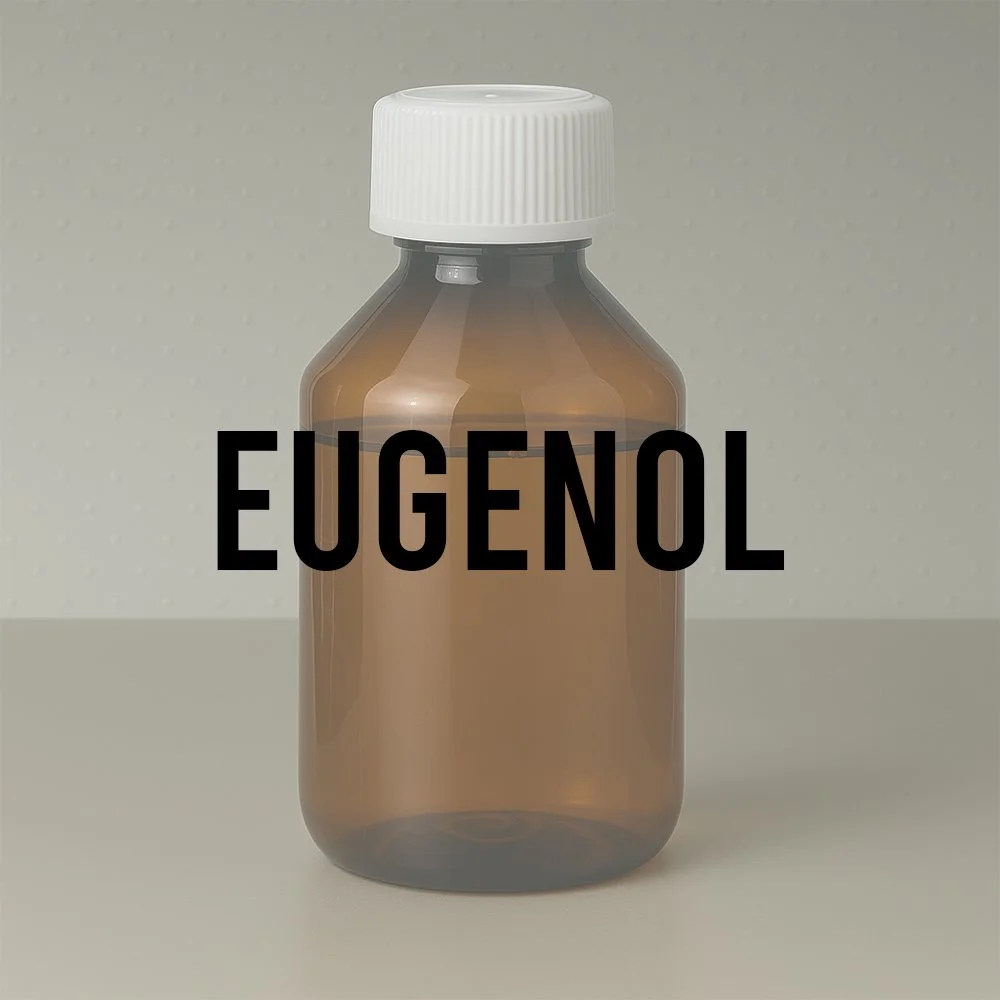Technical Ingredient Overview
🔎 Chemical Name — (E)-3-Phenyl-2-propenal (IUPAC) / trans-Cinnamaldehyde
🧪 Synonyms — Cinnamal, trans-Cinnamaldehyde, 3-Phenylacrolein, Zimtaldehyde, Cinnamylaldehyde, β-Phenylacrolein, 3-Phenyl-2-propenal
📂 CAS Number — 14371-10-9
📘 FEMA Number — 2286 (Generally Recognized as Safe for food use)
⚖️ Molecular Weight — 132.16 g/mol
📝 Odor Type — Aromatic aldehyde, phenylpropanoid
📈 Odor Strength — Very strong (detection threshold: 0.02 ppm in air)
👃🏼 Odor Profile — Intensely spicy-sweet, warm cinnamon bark, balsamic, with honeyed and slightly floral nuances
⚗️ Uses — Oriental compositions, gourmand fragrances, spice accords, fixative applications, masculine fragrances
🧴 Appearance — Pale yellow to amber viscous liquid, may crystallize at low temperatures
What is Cinnamic Aldehyde?
Cinnamic Aldehyde represents one of perfumery’s most recognizable and powerful aromatic aldehydes, functioning as both a signature scent molecule and a versatile compositional tool. This phenylpropanoid compound belongs to the cinnamyl family of aromatic aldehydes, characterized by its conjugated system that links a benzene ring to an aldehyde functional group through an unsaturated carbon chain (Bauer, Garbe, & Surburg, 2001).
The molecule exists predominantly in its trans (E) configuration, which provides the characteristic warm, spicy-sweet profile that has become synonymous with cinnamon bark. This geometric specificity is crucial to its olfactory performance, as the trans isomer delivers significantly more intensity and better tenacity compared to its cis counterpart (Arctander, 1960).
Chemically classified as an α,β-unsaturated aldehyde, Cinnamic Aldehyde exhibits unique reactivity patterns that influence both its stability in formulations and its interaction with other fragrance materials. The extended conjugation system contributes to its relatively high boiling point and moderate volatility, positioning it as a bridge between heart and base notes in fragrance architecture.
Historical Background
The discovery and isolation of Cinnamic Aldehyde marks a pivotal moment in the transition from purely natural perfumery to the synthetic era that would define modern fragrance creation. In 1834, French chemists Jean-Baptiste Dumas and Eugène-Melchior Péligot successfully isolated this compound from Ceylon cinnamon essential oil (Cinnamomum verum), making it one of the earliest identified individual fragrance molecules (Dumas & Péligot, 1834).
The first successful synthesis was achieved by Italian chemist Luigi Chiozza in 1854 through the Perkin reaction, utilizing benzaldehyde and acetaldehyde in the presence of sodium hydroxide. This synthetic pathway, refined and optimized over subsequent decades, established Cinnamic Aldehyde as one of the pioneering commercially produced aroma chemicals (Chiozza, 1856).
The industrial production breakthrough came in the 1920s when German chemical companies, particularly BASF and later Bayer, developed efficient manufacturing processes that made synthetic Cinnamic Aldehyde economically viable for large-scale perfumery applications. This industrialization coincided with the golden age of oriental fragrances, where Cinnamic Aldehyde became a cornerstone ingredient in iconic compositions such as Tabu (1932) and later Opium (1977).
The molecule’s role expanded significantly during the 1950s and 1960s as perfumers began exploring its potential beyond traditional spice applications, discovering its remarkable fixative properties and its ability to add warmth and depth to floral and woody compositions. Modern synthesis techniques, developed in the 1980s and refined through the 2000s, now produce Cinnamic Aldehyde with greater than 99% purity and excellent olfactory consistency.
Olfactory Profile
Scent Family: Oriental-Spicy, Aromatic Aldehyde subfamily
Main Descriptors: The olfactory signature of Cinnamic Aldehyde centers on its immediately recognizable cinnamon bark character, but extends far beyond simple spice replication. The opening impression delivers intense warmth with honeyed sweetness, followed by a rich, balsamic depth that evokes both precious woods and dried spices. Subtle floral nuances emerge in dilution, particularly rose and carnation-like facets that add complexity to the overall profile.
The molecule exhibits remarkable olfactory evolution throughout its development on skin and blotter, beginning with an almost sharp, aldehydic brilliance that quickly transforms into the characteristic warm spice signature. As it develops, deeper balsamic and slightly resinous qualities emerge, supported by a persistent honeyed sweetness that prevents the spice character from becoming harsh or medicinal.
Intensity: Classified as very high intensity with exceptional radiance and diffusion power. Effective concentrations typically range from 0.1% to 2% in fine fragrance applications, with even minimal amounts (0.01-0.05%) providing noticeable olfactory impact in blends.
Tenacity: Excellent persistence with a substantive half-life of 8-12 hours on skin and over 24 hours on blotter. The molecule demonstrates remarkable staying power due to its relatively high molecular weight and strong affinity for both skin and textile substrates.
Volatility: Medium volatility positioning it as a heart-to-base note material. The evaporation rate allows for significant top note presence while maintaining extended development into the drydown phases of fragrance evolution.
Fixative Role: Functions as an effective fixative for lighter materials, particularly citrus and green notes. Its substantive character helps anchor volatile components while contributing its own distinctive signature to the overall composition. The aldehyde functionality provides excellent binding properties with both synthetic and natural materials.
Applications in Fine Fragrance
Cinnamic Aldehyde serves multiple functional roles in contemporary perfumery, ranging from signature accent materials to compositional backbone ingredients. Its primary application domain remains oriental and gourmand fragrances, where it provides authentic spice character and enhances the perception of warmth and richness.
In oriental compositions, Cinnamic Aldehyde typically functions as part of the spice accord, working synergistically with materials like eugenol, clove bud oil, and nutmeg to create complex, multi-dimensional spice effects. Notable commercial applications include Tom Ford Cinnamique, where it serves as the dominant signature material, and classic orientals like Yves Saint Laurent Opium, where it contributes to the distinctive spice-floral balance.
The molecule demonstrates exceptional compatibility with rose materials, particularly Bulgarian and Turkish rose oils, where it enhances the natural spice facets inherent in these precious naturals. This combination forms the foundation for spicy floral compositions and adds depth to traditional rose soliflores. Similarly, its affinity for carnation creates powerful spice-floral accords that were particularly popular in mid-20th century perfumery.
In masculine fragrances, Cinnamic Aldehyde provides warmth and sophistication to woody-spicy compositions, often paired with cedarwood, sandalwood, and amber materials. Its ability to bridge fresh top notes with rich base materials makes it valuable in contemporary men’s fragrances that seek to balance freshness with substantive character.
Gourmand applications showcase another dimension of its versatility, where the honeyed sweetness aspects work harmoniously with vanilla, tonka bean, and caramel notes to create edible, dessert-like accords. The spice character prevents these compositions from becoming cloying while adding sophisticated complexity.
Performance in Formula
The formulation behavior of Cinnamic Aldehyde requires careful consideration of its reactivity and interaction patterns with other fragrance materials. Its α,β-unsaturated aldehyde structure makes it susceptible to nucleophilic attack, particularly from materials containing amine functionalities, which can lead to Schiff base formation and potential olfactory modifications over time.
Blending characteristics reveal excellent diffusion properties, with the molecule readily distributing throughout alcohol-based solutions and demonstrating good substantivity in both aqueous and non-aqueous systems. The material shows particular affinity for fixative bases and amber accords, where it integrates seamlessly while maintaining its distinctive character.
In terms of stability, Cinnamic Aldehyde demonstrates good resistance to oxidation when properly stored, though exposure to light and elevated temperatures can lead to polymerization and subsequent olfactory changes. The addition of antioxidants such as BHT (butylated hydroxytoluene) in concentrations of 100-200 ppm helps maintain olfactory consistency during storage and application.
Compatibility studies indicate excellent behavior with most common fragrance materials, with particularly synergistic effects noted with vanillin, ethyl maltol, benzoin resinoid, and peru balsam. The molecule shows some sensitivity to strongly basic conditions, which can catalyze aldol condensation reactions leading to higher molecular weight products with modified olfactory properties.
Concentration guidelines for optimal performance suggest using 0.5-2% in oriental fragrances, 0.1-0.8% in floral compositions, and 0.2-1.5% in masculine woody-spicy accords. Higher concentrations (above 2%) can lead to overwhelming spice character that may dominate other compositional elements.
Industrial & Technical Uses
Beyond perfumery applications, Cinnamic Aldehyde finds extensive use across multiple industrial sectors, leveraging both its olfactory properties and chemical reactivity. The food and beverage industry represents the largest non-fragrance application, where it serves as a key flavoring agent in baked goods, confectionery, beverages, and processed foods requiring cinnamon character.
In the pharmaceutical industry, Cinnamic Aldehyde functions both as a flavoring masking agent for bitter medications and as an active pharmaceutical ingredient in certain antimicrobial formulations. Research has demonstrated its effectiveness against various bacterial and fungal pathogens, leading to its incorporation in oral care products and topical antiseptic formulations (Chao, Young, Oberg, & Nakaoka, 2000).
The chemical industry utilizes Cinnamic Aldehyde as an intermediate in the synthesis of more complex organic molecules, including cinnamyl alcohol, cinnamic acid, and various cinnamyl esters used in both fragrance and flavor applications. Its α,β-unsaturated aldehyde functionality makes it a valuable building block for creating extended conjugated systems and heterocyclic compounds.
Agricultural applications include its use as a natural pesticide and fungicide, where its antimicrobial properties provide effective control against various crop pathogens while maintaining acceptability in organic farming systems. The molecule’s relatively low environmental persistence and biodegradability make it an attractive alternative to synthetic pesticides in integrated pest management programs.
Industrial cleaning and sanitation products incorporate Cinnamic Aldehyde both for its pleasant odor and its antimicrobial efficacy, particularly in products designed for food service and healthcare environments where both cleaning performance and acceptable fragrance are required.
Regulatory & Safety Overview
IFRA Status: Cinnamic Aldehyde is regulated under IFRA Amendment 51 as a restricted ingredient due to its classification as a fragrance allergen. Current restrictions limit its use to maximum concentrations of 0.01% (100 ppm) in leave-on products and 0.05% (500 ppm) in rinse-off products applied to the body. Products exceeding these thresholds must declare “Cinnamal” on the ingredient list in accordance with EU Regulation 1223/2009.
GHS Classification: The material carries multiple hazard classifications under the Globally Harmonized System:
Skin Sensitizer Category 1 (H317: May cause an allergic skin reaction)
Eye Irritant Category 2 (H319: Causes serious eye irritation)
Aquatic Chronic Toxicity Category 2 (H411: Toxic to aquatic life with long lasting effects)
EU Cosmetics Regulation: Listed as Allergen #4 in Annex III of Regulation (EC) No 1223/2009, requiring mandatory declaration when present above specified thresholds (10 ppm in leave-on products, 100 ppm in rinse-off products).
Toxicology: Extensive toxicological evaluation has established a No Observed Adverse Effect Level (NOAEL) of 50 mg/kg/day based on chronic oral exposure studies in rodents. Dermal sensitization studies indicate a relatively high sensitization potential, with EC3 values (concentration causing sensitization in 3% of test subjects) reported at approximately 0.8% in predictive testing models.
FEMA Status: Generally Recognized as Safe (GRAS) for food use under FEMA number 2286, with acceptable daily intake levels established at 0.7 mg/kg body weight based on comprehensive safety assessments by the Expert Panel of the Flavor and Extract Manufacturers Association.
Recent safety assessments by the Scientific Committee on Consumer Safety (SCCS) have confirmed the safety of current use levels while emphasizing the importance of proper formulation practices to minimize sensitization risk. Recommendations include avoiding use in products intended for sensitive populations (infants, individuals with compromised skin barrier function) and implementing good manufacturing practices to prevent oxidation and impurity formation.
Sources:
Arctander, S. (1960). Perfume and flavor materials of natural origin. S. Arctander.
Bauer, K., Garbe, D., & Surburg, H. (2001). Common fragrance and flavor materials: Preparation, properties and uses(4th ed.). Wiley-VCH.
Chao, S. C., Young, D. G., Oberg, C. J., & Nakaoka, K. (2000). Inhibition of methicillin-resistant Staphylococcus aureus (MRSA) by essential oils. Flavour and Fragrance Journal, 15(6), 444-449.
Chiozza, L. (1856). Über das Zimmtöl und den Zimmtsäurealdehyd. Annalen der Chemie und Pharmacie, 97(3), 348-363.
Dumas, J. B., & Péligot, E. M. (1834). Recherches de chimie organique. Sur l’essence de cannelle, l’acide hippurique et l’acide sébacique. Annales de Chimie et de Physique, 56, 113-154.
European Commission. (2009). Regulation (EC) No 1223/2009 of the European Parliament and of the Council of 30 November 2009 on cosmetic products. Official Journal of the European Union, L 342/59.
IFRA International Fragrance Association. (2019). IFRA Standards Library (51st Amendment). International Fragrance Association.
Scientific Committee on Consumer Safety (SCCS). (2012). Opinion on fragrance allergens in cosmetic products. European Commission, Health & Consumer Protection Directorate-General.











